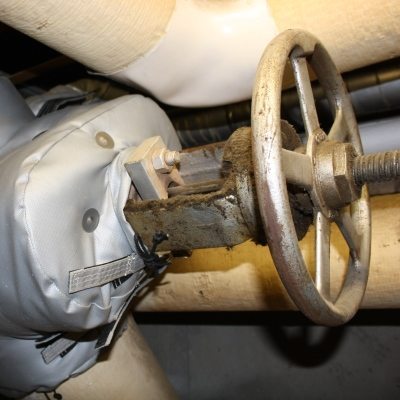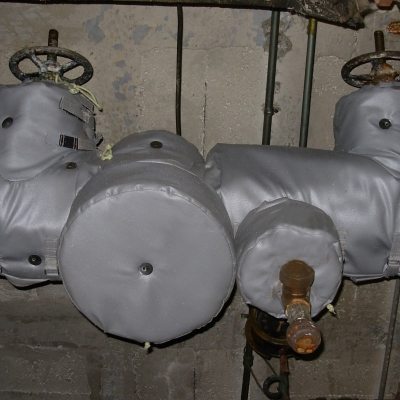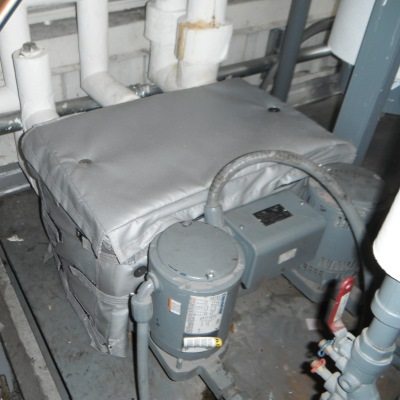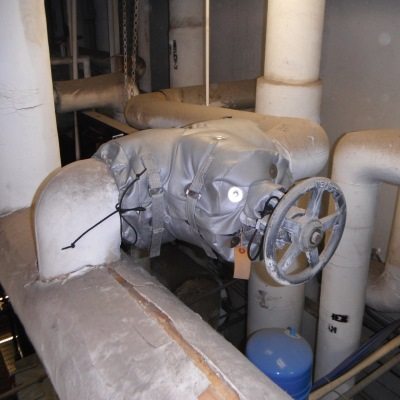RIC-SA2MAT
Recommended for use in dry environments such as mechanical rooms and central plants on:
Valves ∙ Flanges ∙ Expansion Joints ∙ Y-Strainers ∙ Heat Exchangers ∙ Pumps ∙ Tanks ∙ PRV Stations ∙ Boilers
Material Specifications
Inner/Outer Jacket
17.5 oz. LEWCO SA-2 Silicone-impregnated Fiberglass Jacketing*
*Our flexible, tear-resistant silicone-impregnated fiberglass jacketing material is typically recommended for applications that are not subjected to high ambient temperatures or frequently exposed to water and/or moisture.
500˚F
0.0175”
17.5 oz./yd2
Grey
Core Insulation
100% select grade Type “E” LEWCO Mat Insulation *
*Our flexible, tear-resistant silicone-impregnated fiberglass jacketing material is typically recommended for applications that are not subjected to high ambient temperatures or frequently exposed to water and/or moisture.
1200˚F
1”, 1 ½” & 2” (dependent on operating pipe temp.)
9-11 lbs. cu/ft3
.35 @ 300˚F, .48 @ 500˚F & .64 @ 700˚F
Fabrication & Design Requirements
- RICS are custom-fabricated and will conform to the configuration of the pipe or fitting in a manner that maximizes heat retention.
- All RICs are designed so that bending or folding will not be necessary for removal and replacement.
- Machine stitching is used to fabricate all RICs. Stitching is double straight-stitched, 8-10 stitches per inch and parallel stitch rows are spaced 1/8” to 2” apart. All thread at seams is Teflon® coated for resistance and longevity.
- All seams are inside seams meaning that RICs are sewn inside-out and then turned correct side-out before insertion of the insulation core.
- All closing seams are sewn on the exterior of the RIC.
- All parting seams are installed at the low point of each RIC to allow for drainage without the use of drains, weep tubes or grommets.
- All RICs include openings for protrusions from the body such as pipes, packing glands, supports, instrument lines and other obstacles.
- 3” wide flaps at terminal ends are provided to overlap and to secure to adjacent RICs or conventional insulations.
- All terminal end flaps will be the same material as the specified jacketing material with yellow Nomex® draw cords for cinching and securement.
- All straps fabricated for securement will be the same material as the specified jacketing and will include a double buckle or D-ring buckle.
- All straps are placed 2” back from parting seams and on 6” centers.
- All straps are fabricated with an additional piece of jacketing material sewn inside the jacket to provide extra strength at the point of securement.
- Thickness of the core insulation is determined by pipe/fitting temperature or size.
- To prevent insulation movement within the RIC, the insulation core is secured to both the inner and outer jacketing with stainless steel 304 quilt pins and washers.
- Black fire-retardant Velcro® is used to fasten the securement strap to the jacket surface after the strap passes through the double buckle D-ring.
- Each RIC is identified by a 3.5” X 1.5” stainless steel ID tag embossed with information such as RIC #, type/size of item being covered, location of the item as well as any other pertinent information that is requested by the owner/contractor.
- TST recommends covering most valve bonnets and leaving packing glands exposed.
- RICs for most valve types are designed so that each bonnet section is sewn to the body of the valve. For larger valves, the RIC may be fabricated in two sections, each section containing one-half of the valve body and bonnet.









